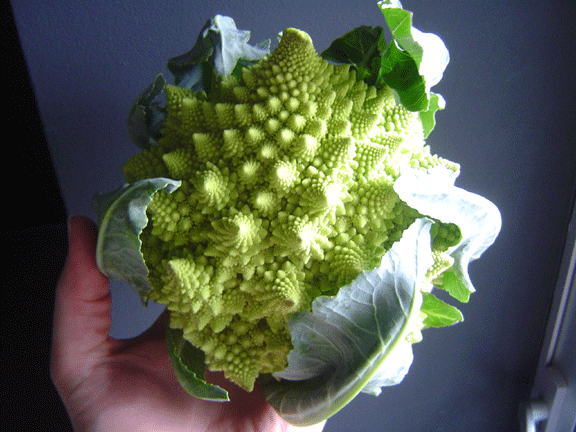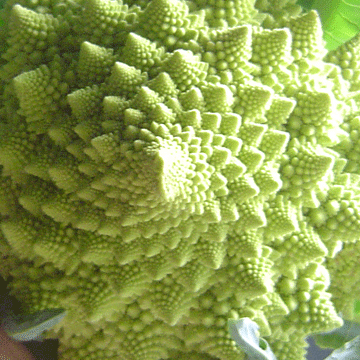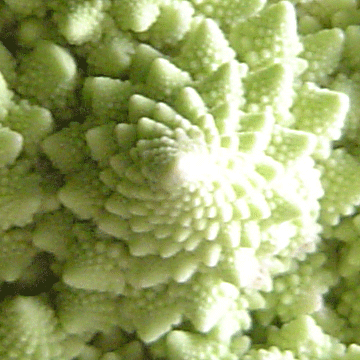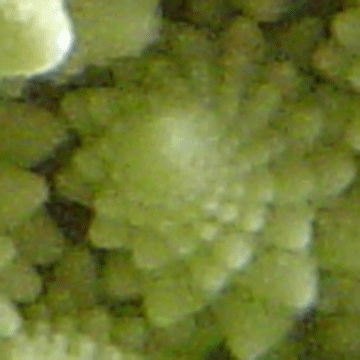
Yesterday morning at the Austin farmer's market, Sarah pointed out some Romanesco cauliflower to me. This fractal food is so pretty that we had to get one! Sarah teased me on the way home for coddling it like a baby, and I must admit that except for the fact that it will go bad otherwise, I don't know that I could ingest something this beautiful. I'd rather display it on our book shelf.
I took the following pictures of successive, self-similar levels of my little bundle. Our aging camera wasn't quite up to the task, but I could get 3 levels pretty well. In person, you can see an additional 4th level (bumps on the bumps in the final picture).
The Fibonacci sequence lives here.
In the botanical application of the Fibonacci numbers, plant outgrowths seek an optimum amount of living space and in so doing sprout in a pattern of intercrossing "whorls." In a sunflower, where the buds become seeds, one family of 55 clockwise whorls intersects another family of 89 counterclockwise whorls - 55 and 89 being successive Fibonacci numbers.
Siobhan Roberts, King of Infinite Space, p259Sure enough, I counted the number whorls to be 8 and 13 (the 6th and 7th Fibonacci numbers), regardless of the fractal level! Sometimes the 8 whorls were clockwise, sometimes counterclockwise, and the direction changed even among outgrowths of the same level. It'd be interesting to study the pattern of whorl directions to figure out what makes them flip. I did notice outgrowths with similar whorl directions tend to clump together.
$4 was a steal for all this math magic!







It's really interesting to wonder what could possibly have led to the plant looking like that. What a remarkable find!
ReplyDeleteSee a Romanescu query of mine at
ReplyDeletehttp://www.cs.umb.edu/~eb/mandelbrot/
Ethan Bolker